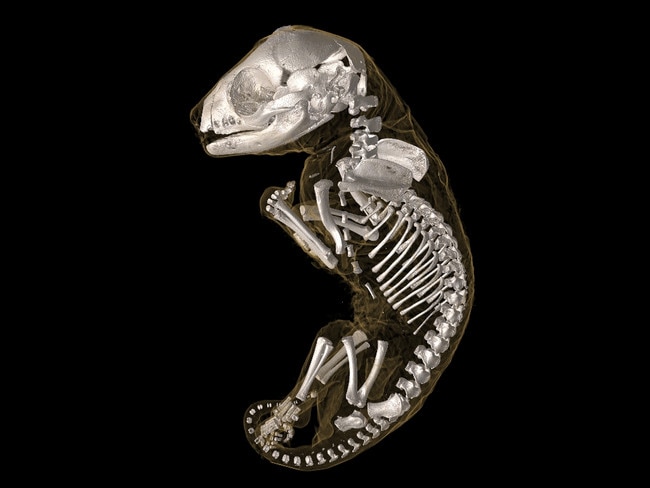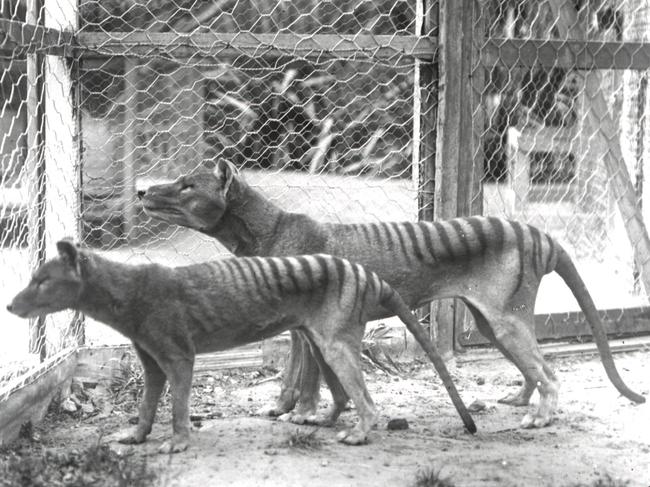Tasmanian tiger could live again after almost 100 years through Melbourne University project
Melbourne scientists are attempting a Jurassic Park-style plot to revive the Tasmanian tiger through a multimillion dollar “de-extinction” project.
Victoria
Don't miss out on the headlines from Victoria. Followed categories will be added to My News.
The extinct Tasmanian tiger will be brought back to life and returned to the wild within a decade, if a bold new University of Melbourne project is successful.
With echoes of a Jurassic Park script, the marsupial, also known as a thylacine, could live again after almost 100 years.
“It isn’t science-fiction any more. This is stuff we have the ability to do now,’’ Professor Andrew Pask, from the university’s School of BioSciences, said.
The “de-extinction” process involves using stem cells to make an embryo which is then transferred into a uterus of a surrogate animal such as a Tasmanian devil or a dunnart, a mouse-sized marsupial.

The research could also resurrect other recently extinct species, he said.
“Dinosaurs … there’s no DNA left, they’re just too old, but for things that have become extinct in the last few thousand years, there’s a distinct possibility you could then sequence the blueprint in their genome and then bring those species back.’’
The creation of the TIGRR (Thylacine Integrated Genetic Restoration Research) Lab is being funded by a $5 million donation from the Wilson Family Trust.
The project will study the genome sequencing of other thylacine remains, including their skins and skeletons, from museum collections to get a variety of specimens to avoid future inbreeding, Prof Pask said.

“We can use the DNA from all those so we can understand the differences that exist in a healthy population and … we can recreate a population that has a healthy genome and multiple individuals (and) that we will be able to breed them.
“The idea is to release them back into the environment.’’
The Tasmanian habitat has remained largely unchanged and would provide the perfect environment to reintroduce the species, he said.
The thylacine was hunted into extinction by colonists by 1936. Reported sightings of the animal over the years have turned up nothing.

The research is expected to help in the conservation of other native marsupials, either endangered or extinct.
Prof Pask said he would like to see the creation of a “bio bank” of genetic material of many lost species.
“So that we can turn them back into living species again.
“This project about creation and conservation.’’
“Humans were responsible for wiping them (thylacine) out and we can now apply technology to bring those animals back which is just an amazing feat of science.
“We all saw Jurassic Park and thought ‘wow, that’s crazy’ but we can actually do that, not for dinosaurs but for other species.
“We have every single bit of technology there, it’s just a matter of adapting it and applying it for marsupials. And we can do it.’’
Trust head Russell Wilson, a fin-tech entrepreneur, contacted Prof Pask directly when he heard of his thylacine studies.
“We came across Professor Pask’s incredible work, believe it or not, via some YouTube clips on him talking about his research and passion for the thylacine and Australian marsupials,’’ Mr Wilson said.
“We realise that we are on the verge of a great breakthrough.
“The benefits of this open research will be wide and varied.”





